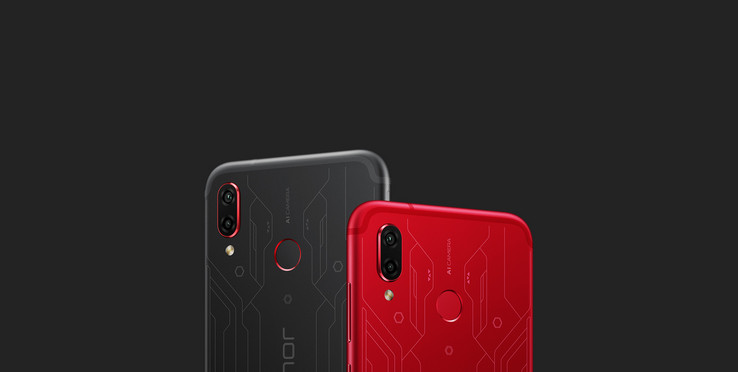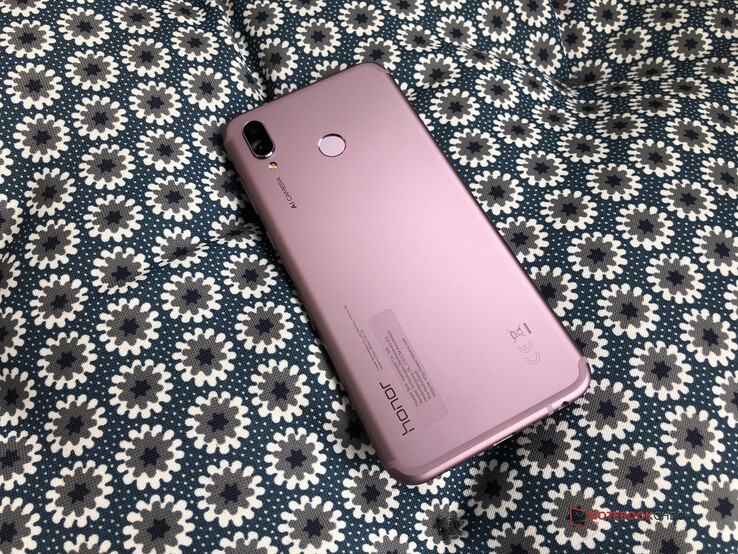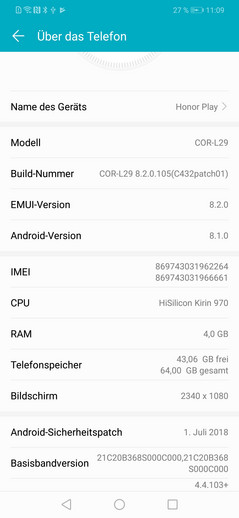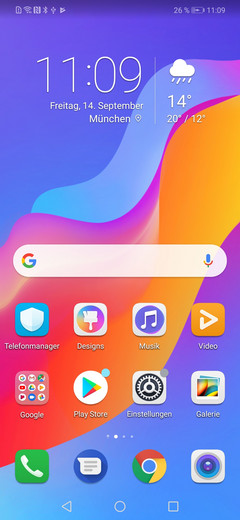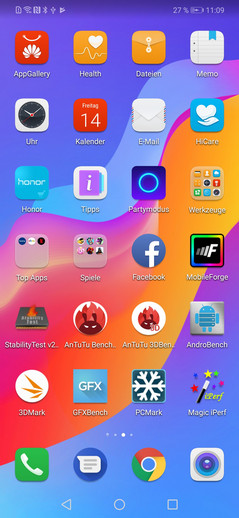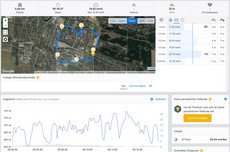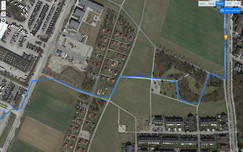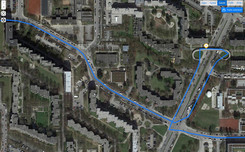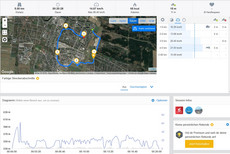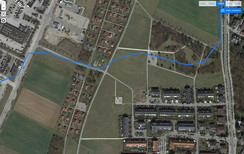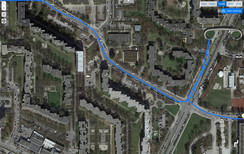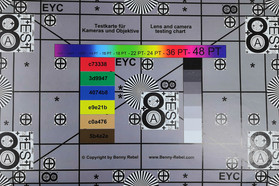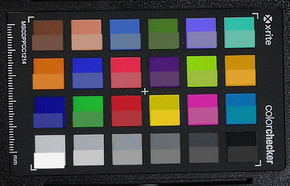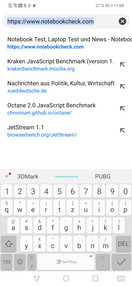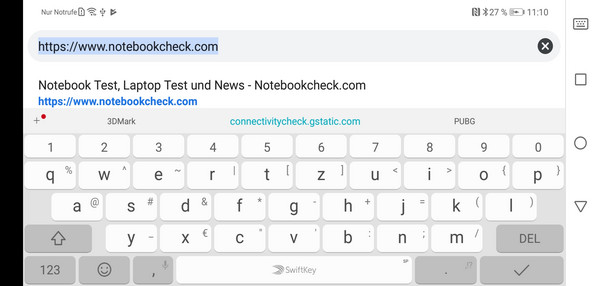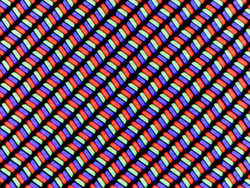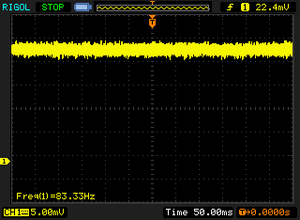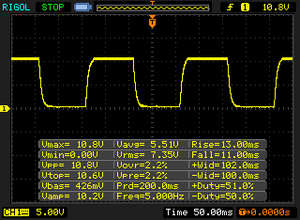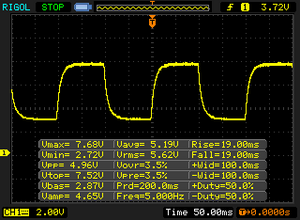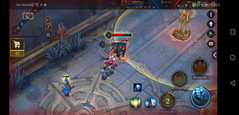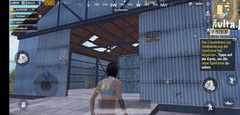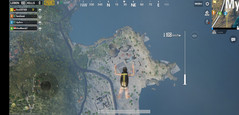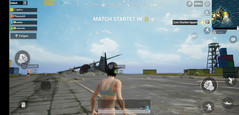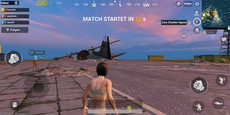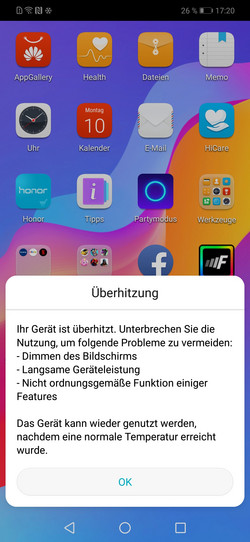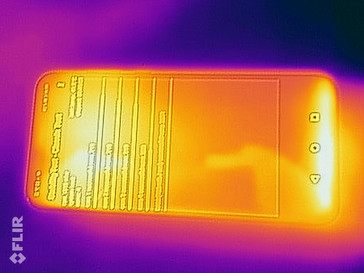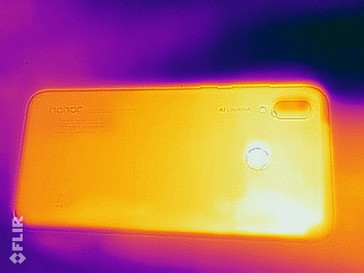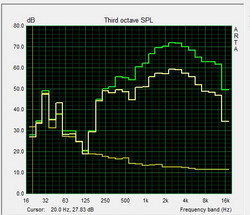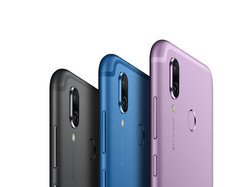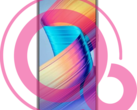Honor Play Smartphone Review
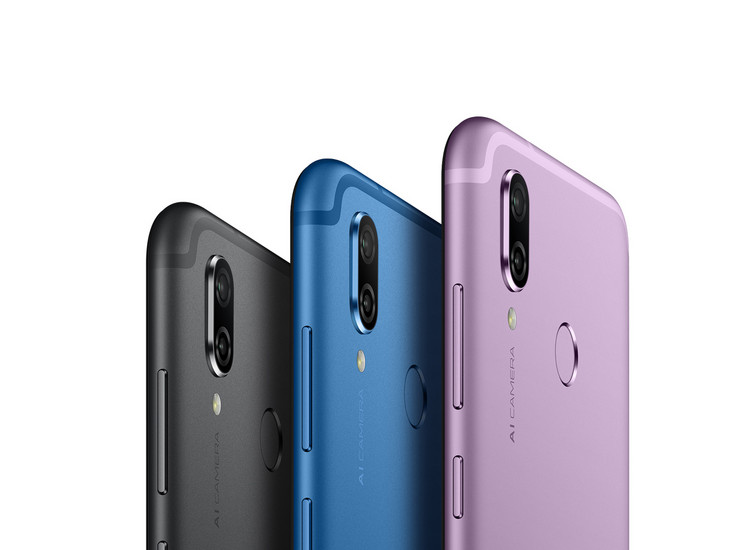
The launch of the Honor Play was overshadowed by complaints about cheating on benchmarks: As OnePlus has done before, Huawei is supposed to have set the phone to remove temperature and performance limits as soon as a benchmark is recognized. The manufacturer is now responding to this by introducing a new "performance mode". This is supposed to offer users the possibility of removing these limits during normal use in order for the benchmark results to match real-life performance.
This questionable method aside, the Honor Play seems to be an interesting device for gamers with a slightly different approach: it is a lot more restrained than most other gaming phones with its rather discreet, iPhone-style design and its affordable price from $350. Particularly the Xiaomi Black Shark does not seem to be holding back with its flashy green case. The current high-end SoC (produced in-house) and the GPU turbo should cater for the device's gaming needs while vibration effects make the experience even more realistic for gamers. Honor has also spent some time on its speakers and has included 3D sound to make gaming even more immersive.
Apart from the gaming smartphones Razer Phone 2017 and Xiaomi Black Shark, the Honor Play also has to compete with normal mid-range smartphones of its price range and prove its advantages towards users interested in gaming. We have chosen the Motorola Moto Z3 Play and the Nokia 7 Plus to represent this category.
Case – a subtle metal case
The case is not in line with current trends in the world of gaming - it uses neither stealth design nor industrial design. Instead, the Honor's case is almost unspectacular with its classic iPhone-style design. While this will not interest hardcore gamers, it means that the Honor Play can also safely be taken into business meetings.
There is a notch (the often-criticized inlet into the screen that contains a speaker, the proximity sensor and the front camera) on the front of the device. This can be hidden with the help of software by dimming the top area of the screen. However, this also means that you have less screen space available.
The stability of the case is OK for this price range: There is some quiet creaking and the LCD screen shows pressure on the front of the screen. The Huawei Honor smartphone is very light at 176 grams (6.2 oz).
Honor offers quite a wide range of colors compared to normal smartphones - which fits to the idea of a gamer. Apart from a normal black case, there is also a blue and a light purple version. A small additional fee gets you the "Player Edition" with laser engravings that imitate the conductive tracks on a computer circuit board on the back. Here you can choose between black and red accents.
Connectivity – mid-range storage options
The most widely available storage configuration has 4 GB of RAM and 64 GB of storage. Some countries also offer a version with 6 GB of RAM, which sounds good for a gaming smartphone. Storage can be expanded via a microSD card. The card is configured as external storage and you can store apps on it as well.
The USB-C port transfers data at USB 2.0 speeds only. There is no NFC.
Software – a little bloatware and a gaming suite
If you were hoping for exceptional gaming software on a gaming smartphone, you will be disappointed by the Honor Play: Apart from some pre-installed games and the Game Suite, which is included in every Huawei smartphone, the Honor Play runs on the usual EMUI 8.0 based on Android 8.1. The Game Suite does offer some functions that might be interesting for gamers: You can turn off all notifications while gaming and even optimize the phone's performance for games. The security patches on our phone are dated 1 July 2018 at the time of writing - we expect to see an update soon.
However, you will have to accept a certain amount of bloatware: There are several pre-installed advertising links and the pre-installed games might not be to everybody's taste either. The phone also has a link to the Honor shop in the shape of an app, plus several tools from Huawei, some of which are actually quite useful. Overall, there is quite a lot of stuff pre-installed on this smartphone and fans of pure operating systems might not be particularly happy with this.
Communication and GPS – rather slow Wi-Fi, fast LTE
The Honor Play supports fast Wi-Fi with the standards 802.11 a/b/g/n/ac. However, the Wi-Fi connection on the Honor smartphone is significantly slower than on the Razer Phone 2017 or the Motorola Moto Z3 Play, for example, even though both smartphones have 802.11ac connectivity. The Xiaomi Black Shark is a lot slower in our standardized Wi-Fi test with the reference router Linksys EA8500. Pages load very quickly close to the router, and the phone also displays full reception. At a distance of 10 meters (~33 feet) to the router and through three walls, the Honor still has half the reception and pages take slightly longer to load.
The Honor Play offers 10 LTE frequencies. Unfortunately, these do not cover the US frequencies very well. You should have no issues using the phone in Europe. Reception was quite good in our test using the German D2 network in a city. We usually had half the signal strength and 4G+ indoors.
| Networking | |
| iperf3 transmit AX12 | |
| Razer Phone 2017 | |
| Nokia 7 Plus | |
| Motorola Moto Z3 Play | |
| Honor Play | |
| Xiaomi Black Shark | |
| iperf3 receive AX12 | |
| Razer Phone 2017 | |
| Nokia 7 Plus | |
| Motorola Moto Z3 Play | |
| Honor Play | |
| Xiaomi Black Shark | |
Indoors (with an armored concrete ceiling), the Honor Play can only locate us when standing near a window. Outdoors, however, positioning is very fast and accurate within 5 meters (~16.4 feet). Google Maps also shows our location correctly on the map and the compass works well, too.
Our practical test - a bike tour together with the professional navigation system Garmin Edge 520 - uncovers the mediocre functions of the Honor Play: It seems to have difficulties following our path, simply ignoring winding sections such as around the bridge and the zig-zag path in the woods and drawing a more-or-less straight line across instead. This is a shame and means we cannot really recommend the Honor Play for everyday navigation.
Telephone and Call Quality – noisy telephone calls with the Honor Play
The telephone app is adapted to Huawei's design language, but its functions and operation are basically very similar to those of the standard Android app. Telephoning itself is accompanied by a noticeable drone. While the maximum volume of our call partner is sufficient to hear them in louder surroundings, the sound is never completely noise-free, always sounding slightly muffled with a noticeable drone at higher volumes. The microphone also transmits our voice with significant droning as soon as we raise our voice slightly. Quiet talking is transmitted very nicely. The sound profile is similar when using the speakerphone.
Cameras – exaggerated colors and good image sharpness
There is a dual camera on the back of the Honor Play. Its main lens has a resolution of 16 megapixels while the second one only has 2 MP, which means that it can only be used to improve depth of field but not to take separate pictures. The camera is supported by artificial intelligence that analyses the image content even before the picture is taken in order to choose the correct settings in a number of categories. This caused colors to be strongly enhanced in our test photos - a little too much for our taste, as the photos almost looked like they came out of a comic book. A photograph of our surroundings displayed the blue sky very nicely, however, as the mode "blue sky" was automatically set before the picture was taken. The whole picture was very crisp. The automatic brightening up of pictures taken in dark surroundings works quite well, although there is noticeable image noise and some details are missing.
The main camera can record videos in UHD with a maximum of 30 fps. These videos are a little on the dark side, although the phone reacts very quickly to changing ambient light and color reproduction is decent.
The front camera also has a resolution of 16 megapixels and you can again let the AI mode choose the perfect settings for a portrait. Colors are reproduced quite well, and the sharpness is good within the fixed focus area.
We took another close look at the main camera in our lab with set artificial lighting. Again, colors appear slightly exaggerated. We also noticed that the camera has very good sharpness of detail. There were no problems with displaying text on a colorful background. Individual items are generally clearly distinguished from one another. Our photo of the ColorChecker test chart shows how strongly colors are distorted by the camera and that some color patches appear a little muddy.
Accessories and Warranty – two years of security
The box of the Honor Play also contains a quick charger plus USB cable as well as a SIM tool and a silicon case. The Honor shop does not currently offer any other accessories that are made specifically for the Honor Play.
The warranty lasts 24 months. Please see our Guarantees, Return policies and Warranties FAQ for country-specific information.
Input Devices & Handling – precise touchscreen, insecure Face Unlock
The pre-installed keyboard app is called SwiftKey. It is comfortable to use but does not look as clean as Google's GBoard using the standard settings. Of course, you can customize SwiftKey with numerous designs and other setting options and if you prefer using a different keyboard app, you are always free to download and install that.
The touchscreen has a good surface that responds well even at the edges. It also supports a glove mode as well as motion control and one-hand operation.
The fingerprint reader is located on the back of the device. It wakes and unlocks the smartphone from standby with only a short delay. If the device is already awake, it takes less time. The Huawei smartphone also offers face recognition. However, this is only software-based and we were able to trick it using a picture on a smartphone display.
Navigation works via onscreen keys or via the Navidot that can be placed anywhere on the screen. The only hardware buttons are positioned on the right side of the case. They are easy to find by touch and have a good pressure point.
Display – the Honor smartphone offers good color accuracy
Since smartphone displays are expected to be as borderless as possible, manufacturers are turning their backs on the traditional 16:9 display format more and more. Accordingly, the Honor Play's screen has an aspect ratio of 19.5:9 - although the notch at the top of the screen should actually also be subtracted from this. The screen can display a maximum of 2340 x 1080 pixels (the width being slightly above Full-HD resolution). 16:9 content, such as most videos, are displayed with black bars on either side.
The screen brightness is average - other smartphones, such as the Xiaomi Black Shark, have significantly brighter screens. The Razer Phone, however, is even darker than our test unit. The brightness distribution on the Honor Play is not as even as on its competitors and large color areas might show slight differences in brightness.
| |||||||||||||||||||||||||
Brightness Distribution: 89 %
Center on Battery: 435 cd/m²
Contrast: 1115:1 (Black: 0.39 cd/m²)
ΔE ColorChecker Calman: 2.89 | ∀{0.5-29.43 Ø4.77}
ΔE Greyscale Calman: 4.1 | ∀{0.09-98 Ø5}
96.7% sRGB (Calman 2D)
Gamma: 2.251
CCT: 7408 K
| Honor Play IPS, 2340x1080, 6.3" | Razer Phone 2017 IGZO LCD, 120 Hz, Wide Color Gamut, 1440x2560, 5.7" | Xiaomi Black Shark IPS, 2160x1080, 6" | Motorola Moto Z3 Play AMOLED, 2160x1080, 6" | Nokia 7 Plus IPS, 2160x1080, 6" | |
|---|---|---|---|---|---|
| Screen | 12% | -22% | -34% | 9% | |
| Brightness middle (cd/m²) | 435 | 436 0% | 549 26% | 446 3% | 458 5% |
| Brightness (cd/m²) | 426 | 417 -2% | 541 27% | 451 6% | 463 9% |
| Brightness Distribution (%) | 89 | 92 3% | 95 7% | 93 4% | 92 3% |
| Black Level * (cd/m²) | 0.39 | 0.16 59% | 0.42 -8% | 0.22 44% | |
| Contrast (:1) | 1115 | 2725 144% | 1307 17% | 2082 87% | |
| Colorchecker dE 2000 * | 2.89 | 3.88 -34% | 6.08 -110% | 6.58 -128% | 4 -38% |
| Colorchecker dE 2000 max. * | 6.03 | 7.96 -32% | 10.69 -77% | 11.94 -98% | 7.4 -23% |
| Greyscale dE 2000 * | 4.1 | 5.8 -41% | 6.6 -61% | 3.6 12% | 4.7 -15% |
| Gamma | 2.251 98% | 2.45 90% | 2.305 95% | 2.199 100% | 2.19 100% |
| CCT | 7408 88% | 7657 85% | 8399 77% | 7116 91% | 7425 88% |
* ... smaller is better
Screen Flickering / PWM (Pulse-Width Modulation)
| Screen flickering / PWM detected | 83.3 Hz | ≤ 15 % brightness setting | |
The display backlight flickers at 83.3 Hz (worst case, e.g., utilizing PWM) Flickering detected at a brightness setting of 15 % and below. There should be no flickering or PWM above this brightness setting. The frequency of 83.3 Hz is very low, so the flickering may cause eyestrain and headaches after extended use. In comparison: 53 % of all tested devices do not use PWM to dim the display. If PWM was detected, an average of 8084 (minimum: 5 - maximum: 343500) Hz was measured. | |||
The black value is average at 0.39 cd/m² and the contrast ratio, while still being decent enough, is the worst of the entire comparison field.
We were pleased with the comparatively low color deviation in our test with the spectrophotometer and CalMAN software. There are different settings for white balance, although we actually thought the standard settings were already very good. Grayscales, however, show a slight blue cast in this mode.
Users might be bothered by the screen flickering that occurs at the lowest brightness level: The frequency of 83.3 Hz can lead to headaches for sensitive users, so we would recommend you test the display before purchase.
Display Response Times
| ↔ Response Time Black to White | ||
|---|---|---|
| 24 ms ... rise ↗ and fall ↘ combined | ↗ 13 ms rise | |
| ↘ 11 ms fall | ||
| The screen shows good response rates in our tests, but may be too slow for competitive gamers. In comparison, all tested devices range from 0.1 (minimum) to 240 (maximum) ms. » 53 % of all devices are better. This means that the measured response time is worse than the average of all tested devices (20.2 ms). | ||
| ↔ Response Time 50% Grey to 80% Grey | ||
| 38 ms ... rise ↗ and fall ↘ combined | ↗ 19 ms rise | |
| ↘ 19 ms fall | ||
| The screen shows slow response rates in our tests and will be unsatisfactory for gamers. In comparison, all tested devices range from 0.165 (minimum) to 636 (maximum) ms. » 54 % of all devices are better. This means that the measured response time is worse than the average of all tested devices (31.6 ms). | ||
The Honor Play can be used outdoors, although you can expect strong reflections in direct sunlight. It is easier using it in shade.
The viewing angles are good; there are hardly any differences in brightness even from a very wide angle.
Performance – cheating
The Kirin 970 is currently the fastest SoC available from Huawei's own chip producer. However, it is already a year old and should soon be replaced by a new version. Thanks to eight cores and 2400 GHz, the Honor Play scores decent results in the benchmarks. However, we would like to remind you again that Huawei is clearly giving its phone a hand by letting it recognize when a benchmark is running.
But even when cheating the Play cannot really compete with other gaming smartphones: The Razer Phone and the Xiaomi Black Shark often offer up to 10 - 20% more power. The only exception is the GFXBench - here, the Honor Play is the winner.
| AnTuTu v6 - Total Score (sort by value) | |
| Honor Play | |
| Xiaomi Black Shark | |
| Motorola Moto Z3 Play | |
| Nokia 7 Plus | |
| Average HiSilicon Kirin 970 (173653 - 181973, n=8) | |
| AnTuTu v7 - Total Score (sort by value) | |
| Honor Play | |
| Razer Phone 2017 | |
| Xiaomi Black Shark | |
| Motorola Moto Z3 Play | |
| Nokia 7 Plus | |
| Average HiSilicon Kirin 970 (152773 - 212278, n=6) | |
| PCMark for Android | |
| Work performance score (sort by value) | |
| Honor Play | |
| Razer Phone 2017 | |
| Motorola Moto Z3 Play | |
| Nokia 7 Plus | |
| Average HiSilicon Kirin 970 (8115 - 9326, n=8) | |
| Work 2.0 performance score (sort by value) | |
| Honor Play | |
| Razer Phone 2017 | |
| Xiaomi Black Shark | |
| Motorola Moto Z3 Play | |
| Nokia 7 Plus | |
| Average HiSilicon Kirin 970 (6293 - 7046, n=8) | |
| GFXBench 3.0 | |
| on screen Manhattan Onscreen OGL (sort by value) | |
| Honor Play | |
| Razer Phone 2017 | |
| Xiaomi Black Shark | |
| Motorola Moto Z3 Play | |
| Nokia 7 Plus | |
| Average HiSilicon Kirin 970 (26 - 56, n=8) | |
| Average of class Smartphone (18 - 166, n=157, last 2 years) | |
| 1920x1080 1080p Manhattan Offscreen (sort by value) | |
| Honor Play | |
| Razer Phone 2017 | |
| Xiaomi Black Shark | |
| Motorola Moto Z3 Play | |
| Nokia 7 Plus | |
| Average HiSilicon Kirin 970 (23 - 66, n=8) | |
| Average of class Smartphone (12 - 606, n=156, last 2 years) | |
| GFXBench 3.1 | |
| on screen Manhattan ES 3.1 Onscreen (sort by value) | |
| Honor Play | |
| Razer Phone 2017 | |
| Xiaomi Black Shark | |
| Motorola Moto Z3 Play | |
| Nokia 7 Plus | |
| Average HiSilicon Kirin 970 (18 - 39, n=8) | |
| Average of class Smartphone (11 - 166, n=157, last 2 years) | |
| 1920x1080 Manhattan ES 3.1 Offscreen (sort by value) | |
| Honor Play | |
| Razer Phone 2017 | |
| Xiaomi Black Shark | |
| Motorola Moto Z3 Play | |
| Nokia 7 Plus | |
| Average HiSilicon Kirin 970 (19 - 39, n=8) | |
| Average of class Smartphone (8.4 - 413, n=156, last 2 years) | |
The Honor Play also has to accept being last place in the browser benchmarks. While pages seem to load quickly subjectively, they are slower than on other smartphones of this price range and top-range gaming phones.
| JetStream 1.1 - Total Score | |
| Razer Phone 2017 (Chrome 65) | |
| Nokia 7 Plus (Chrome 60) | |
| Average HiSilicon Kirin 970 (33.1 - 58.6, n=8) | |
| Motorola Moto Z3 Play (Chrome 67) | |
| Honor Play (Chrome 68) | |
| Xiaomi Black Shark | |
| Octane V2 - Total Score | |
| Average of class Smartphone (2228 - 126661, n=196, last 2 years) | |
| Xiaomi Black Shark (Firefox 61) | |
| Razer Phone 2017 (Chrome 65) | |
| Nokia 7 Plus (Chrome 60) | |
| Average HiSilicon Kirin 970 (6692 - 11838, n=8) | |
| Motorola Moto Z3 Play (Chrome 67) | |
| Honor Play (Chrome 68) | |
| Mozilla Kraken 1.1 - Total | |
| Honor Play (Chrome 68) | |
| Motorola Moto Z3 Play (Chrome 67) | |
| Average HiSilicon Kirin 970 (3591 - 6221, n=8) | |
| Nokia 7 Plus (Chrome 60) | |
| Razer Phone 2017 (Chrome 65) | |
| Xiaomi Black Shark (Firefox 61) | |
| Average of class Smartphone (257 - 28190, n=156, last 2 years) | |
| WebXPRT 2015 - Overall | |
| Xiaomi Black Shark (Firefox 61) | |
| Nokia 7 Plus (Chrome 60) | |
| Average HiSilicon Kirin 970 (119 - 187, n=8) | |
| Motorola Moto Z3 Play | |
| Honor Play (Chrome 68) | |
* ... smaller is better
Accessing our reference SD card Toshiba Exceria Pro M501 goes quite quickly and the internal UFS 2.1 storage can also be accessed quickly. The Honor Play is faster than all of its competitors here.
| Honor Play | Razer Phone 2017 | Xiaomi Black Shark | Motorola Moto Z3 Play | Nokia 7 Plus | Average 64 GB UFS 2.1 Flash | Average of class Smartphone | |
|---|---|---|---|---|---|---|---|
| AndroBench 3-5 | -22% | -12% | -31% | -37% | -16% | 320% | |
| Sequential Read 256KB (MB/s) | 895 | 732 -18% | 742 -17% | 271.7 -70% | 283.1 -68% | 696 ? -22% | 2253 ? 152% |
| Sequential Write 256KB (MB/s) | 188.3 | 202.5 8% | 199.6 6% | 182.5 -3% | 211.6 12% | 224 ? 19% | 1878 ? 897% |
| Random Read 4KB (MB/s) | 142.4 | 142.5 0% | 127.2 -11% | 60.6 -57% | 54.7 -62% | 137.2 ? -4% | 298 ? 109% |
| Random Write 4KB (MB/s) | 155.5 | 14.3 -91% | 114.1 -27% | 84.1 -46% | 19.62 -87% | 84.7 ? -46% | 342 ? 120% |
| Sequential Read 256KB SDCard (MB/s) | 82.8 ? | 79.4 -4% | 83.7 1% | 82.2 -1% | 68.6 ? -17% | ||
| Sequential Write 256KB SDCard (MB/s) | 71.9 ? | 52.5 -27% | 62.7 -13% | 62.3 -13% | 52.2 ? -27% |
Games – good, but not perfect
In order to make their smartphone more attractive to gamers, Honor has announced a partnership with the PUGB mobile publisher Tencent at the IFA. It is not surprising, therefore, that PUBG has several special features: Pulling the trigger activates the 4D Smart Shock feature and makes the phone vibrate. The vibration is different depending on which weapon you use, whether you use a muffler or if a grenade explodes next to you. However, it is annoying that the corners of the display are rounded, as this cuts off a part of the mini map. The iPhone X avoids this issue by placing the mini map slightly further towards the middle.
The game was displayed quite smoothly during our test, but we did regularly register drops of the frame rate to below 30 fps when the graphics were set to HD. As there are rumors that details might also be reduced on the Honor Play, we took screenshots and compared them with other smartphones, to find out whether there really was a difference in the amount of detail visible. The texture of the runway does appear significantly more detailed on the OnePlus 5T and the iPhone X with the same settings.
The smartphone cannot manage a constant 60 fps in Arena of Valor and settles down at 55 fps, which still is quite smooth. The control via touchscreen and gyroscope works well in all games.
Overall, the Honor Play is definitely not the absolute high-end gaming smartphone - this place has already been taken by the Razer Phone 2017: Its 120-Hz mode and more stable frame rates are clearly made for hard-core gaming enthusiasts. The Honor Play on the other hand is directed at gamers who do not have quite as many expectations - and is considerably cheaper. It can still display most current games smoothly and the vibration feature is a nice gimmick for gamers.
| PUBG Mobile | |||
| Settings | Value | ||
| Smooth | 32 fps | ||
| HD | 32 fps | ||
| Arena of Valor | |||
| Settings | Value | ||
| min | 55 fps | ||
| high HD | 54 fps | ||
Emissions – overheating is possible
Temperature
If the Honor Play is under no or very low load, there are no issues with temperature development: The surface temperatures of the Huawei smartphone do not even reach 30 °C (~86 °F). Under load, they increase to up to 41.5 °C (~107 °F), which is clearly noticeable but not yet critical.
Things do not look quite as good on the inside of the case: We noticed that several benchmarks were aborted when they ran several times in a row. The GFXBench battery test confirmed our suspicions: The Honor Play could not get through Manhatten 3.1 nor the simpler T-Rex test successfully - each time, the device aborted the test with a warning saying the temperatures were too high. This is not to be ignored in a gaming smartphone, as there are hardly any applications that are as demanding as intensive gaming. While most games are not as demanding as the benchmarks, Huawei and Honor had still better take another look at the Play's temperature management - provided that it is possible to make any changes via a patch.
(±) The maximum temperature on the upper side is 41.5 °C / 107 F, compared to the average of 35.2 °C / 95 F, ranging from 21.9 to 247 °C for the class Smartphone.
(+) The bottom heats up to a maximum of 39.7 °C / 103 F, compared to the average of 34 °C / 93 F
(+) In idle usage, the average temperature for the upper side is 27.6 °C / 82 F, compared to the device average of 32.9 °C / 91 F.
Speaker
The single speaker is placed at the bottom edge of the Honor smartphone. It sounds quite nice and balanced and also reproduces low mids decently. The sound is warm, and highs are not overrepresented. Overall, the speaker can easily be used to get an idea of a song or watch a YouTube video.
The Histen sound effect is only available when using headphones. You can then also activate the 3D sound effect that Honor is actively promoting. The settings are limited to four presets and the choice of the type of headset you are using. The different effects on the sound are clearly noticeable, so most people should be able to find a setting that suits them.
As there is a 3.5 mm audio jack available, you cannot use the USB C port for audio output. This is a shame, as otherwise two users could have listened to music simultaneously. There are no issues when connecting the device to external Bluetooth speakers and sound is transmitted clearly and without any delays.
Honor Play audio analysis
(±) | speaker loudness is average but good (80.2 dB)
Bass 100 - 315 Hz
(-) | nearly no bass - on average 61.4% lower than median
(+) | bass is linear (0% delta to prev. frequency)
Mids 400 - 2000 Hz
(-) | nearly no mids - on average 61.4% lower than median
(+) | mids are linear (0% delta to prev. frequency)
Highs 2 - 16 kHz
(-) | nearly no highs - on average 61.4% lower than median
(+) | highs are linear (0% delta to prev. frequency)
Overall 100 - 16.000 Hz
(-) | overall sound is not linear (122.1% difference to median)
Compared to same class
» 91% of all tested devices in this class were better, 7% similar, 2% worse
» The best had a delta of 11%, average was 35%, worst was 134%
Compared to all devices tested
» 97% of all tested devices were better, 2% similar, 1% worse
» The best had a delta of 4%, average was 24%, worst was 134%
Razer Phone 2017 audio analysis
(±) | speaker loudness is average but good (81.2 dB)
Bass 100 - 315 Hz
(-) | nearly no bass - on average 19.3% lower than median
(±) | linearity of bass is average (10.6% delta to prev. frequency)
Mids 400 - 2000 Hz
(+) | balanced mids - only 3.4% away from median
(+) | mids are linear (4.4% delta to prev. frequency)
Highs 2 - 16 kHz
(+) | balanced highs - only 1.7% away from median
(+) | highs are linear (3% delta to prev. frequency)
Overall 100 - 16.000 Hz
(±) | linearity of overall sound is average (16% difference to median)
Compared to same class
» 5% of all tested devices in this class were better, 4% similar, 91% worse
» The best had a delta of 11%, average was 35%, worst was 134%
Compared to all devices tested
» 24% of all tested devices were better, 5% similar, 70% worse
» The best had a delta of 4%, average was 24%, worst was 134%
Battery Runtime – decent duration
Power Consumption
The Honor Play does relatively badly in terms of power consumption: Although its consumption under maximum load is acceptable, the values while idling are very high compared to other devices in this price range. The phone does offer an energy-saving mode and even an ultra-energy-saving mode. These limit consumption noticeably when needed.
| Off / Standby | |
| Idle | |
| Load |
|
Key:
min: | |
| Honor Play 3750 mAh | Razer Phone 2017 4000 mAh | Xiaomi Black Shark 4000 mAh | Motorola Moto Z3 Play 3000 mAh | Nokia 7 Plus 3800 mAh | Average HiSilicon Kirin 970 | Average of class Smartphone | |
|---|---|---|---|---|---|---|---|
| Power Consumption | 24% | 27% | 30% | 33% | 23% | 20% | |
| Idle Minimum * (Watt) | 1.4 | 0.83 41% | 0.8 43% | 1.3 7% | 0.65 54% | 0.978 ? 30% | 0.846 ? 40% |
| Idle Average * (Watt) | 2.6 | 2.11 19% | 1.5 42% | 2 23% | 1.76 32% | 2.12 ? 18% | 1.444 ? 44% |
| Idle Maximum * (Watt) | 4.3 | 2.24 48% | 2.3 47% | 2.7 37% | 1.78 59% | 2.51 ? 42% | 1.627 ? 62% |
| Load Average * (Watt) | 6.5 | 4.94 24% | 4.8 26% | 3.7 43% | 4.47 31% | 5.01 ? 23% | 7.04 ? -8% |
| Load Maximum * (Watt) | 8.2 | 9.08 -11% | 10.1 -23% | 5.1 38% | 9.13 -11% | 8.1 ? 1% | 11.3 ? -38% |
* ... smaller is better
Battery Runtime
Although the power consumption rates measured in our test are not ideal, the Honor Play still manages to offer decent battery runtimes with its 3750 mAh battery: 11:50 hours in our Wi-Fi test is a good result. The runtimes under load are more interesting for gamers and the Honor Play manages 3:24 hours here, which is still quite decent. The Xiaomi Black Shark and the Razer Phone both offer slightly longer runtimes, but the differences are minimal.
The included quick charger recharges the Honor smartphone completely within 2 hours.
| Honor Play 3750 mAh | Razer Phone 2017 4000 mAh | Xiaomi Black Shark 4000 mAh | Motorola Moto Z3 Play 3000 mAh | Nokia 7 Plus 3800 mAh | |
|---|---|---|---|---|---|
| Battery runtime | 8% | 6% | -16% | -9% | |
| Reader / Idle (h) | 28.7 | 29.2 2% | 20.8 -28% | 28.4 -1% | |
| H.264 (h) | 12.7 | 12.5 -2% | 10.8 -15% | 11.8 -7% | |
| WiFi v1.3 (h) | 11.8 | 12.7 8% | 11.9 1% | 9.9 -16% | 11.2 -5% |
| Load (h) | 3.4 | 4.2 24% | 3.3 -3% | 2.6 -24% |
Pros
Cons
Verdict – a smartphone for casual gamers
The Honor Play is not made for hardcore gamers that are looking to get the most frames possible out of their smartphone. It is directed at the larger group of mobile phone gamers who want a good-looking device that will also let them play more demanding games reliably. The Honor Play has managed to fulfill these requirements: Its performance is fully sufficient, its screen has accurate colors, there are no delays when reacting to inputs and it has a long battery runtime.
However, do not expect too much from the features that reek of marketing: The 3D sound effect for headphones is quite fun, as is the rumble feature in PUBG. The latter, however, is still limited to individual games for the moment. Time will tell if more games will support it in future. The software does not give off a particularly strong gaming vibe either - Xiaomi and Razer make it a lot clearer when we are dealing with a dedicated gaming smartphone.
The Honor Play is a discreet gaming smartphone with a good price-to-performance ratio for average needs.
Overall, this leaves us with a very good mid-range smartphone available for a good price, as one would expect from an Honor. All gamers with normal requirements who occasionally want to play a more demanding game but are not too bothered with graphics should be very happy with this device. If you are looking for a 120-Hz mode or a flashier gaming design, you will have to look a little further. On the other hand, the Honor Play is more inconspicuous. If you want to play games during a boring meeting, the Honor Play might be a good choice.
Honor Play
- 09/14/2018 v6 (old)
Florian Wimmer




